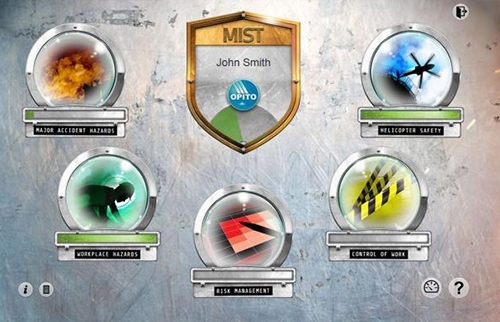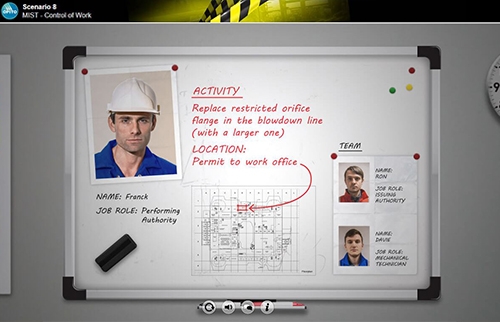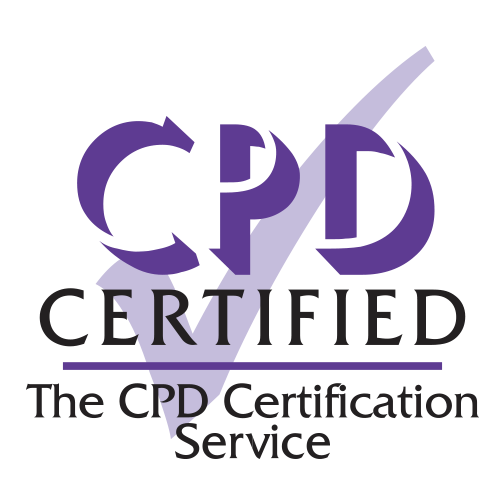FAQ's
-
Do I qualify to do OPITO MIST online?
MIST Online (Code 5311) is for experienced offshore personnel working in the UK Continental Shelf (UKCS). The requirements for completing MIST Online are as follows:
- You must have a valid Vantage POB number
- You must have worked offshore before (UK or International)
You can also renew your MIST online if you already have a valid OPITO MIST Initial or valid OPITO MIST Further training certificate.
If you do not meet the above criteria then you should enrol for the 2-day classroom version of the course. You can find your local training provider at www.opito.com. If you are unsure whether to do the online or classroom course, contact your employer or the operator of the asset you will be visiting/working on and they will be able to advise you further.
Note: If you have previously done the MIST 2-day classroom course and it is now due to expire following 4 years' validity, then you are also eligible to do the MIST online refresher course.
-
Do you need MIST to work offshore?
OPITO states that the MIST course is 'highly recommended' for anyone working offshore in the UK and, Since 2009, it is expected that anyone working offshore in the UK has a valid MIST certificate. The MIST Online training is the learning and assessment programme for experienced offshore workers to renew their MIST certification every four years.
-
What is the validity period for an OPITO MIST Certificate?
Your 4-year OPITO MIST Further Training (Code 5311) certificate will be provided by email upon completion of the course. Existing MIST certificates can be renewed up to three months in advance of the expiry date. Your new MIST certificate will be valid for four years from the previous expiry date.
-
What is the cost of MIST Online?
The MIST Online course costs £51 excluding VAT (£61.20 including VAT) and is valid for 4 years from the day of completing the course.
-
How long does the online course take?
Depending on your current level of safety knowledge and awareness, the course duration differs person to person. We would advise allocating 5 hours to complete the course, but the average completion time is around 3 hours. You can stop the course at any point and return to it at a later date if required. The course will remember your progress in each module and therefore you will not lose any of your prior work.
-
What topics are covered in OPITO MIST?
There are 5 modules in the OPTIO MIST standard:
- Major Accident Hazards
- Workplace Hazards & Personal Safety
- Risk Management
- Control of Work
- Helicopter Safety
You can sit the modules in any order and you can also jump out of a current module and start / continue with another one. You are in full control!
-
Why is there an optional Pre-Assessment?
The pre-assessment is designed to test your existing knowledge and only provide you with the learning content that you need. At the start of each module, you will be offered this optional pre-assessment on the learning objectives in that module. Each question you get correct will be followed by a second question to rule out the 'luck factor', if you correctly answer both questions the content related to that learning objective will be removed from the course. The more questions you get right in the pre-assessment, the shorter the course becomes. If you are keen to see all the content for a particular module, just select the 'skip pre-assessment' option when it is offered to you.
-
How do I get my OPITO MIST Certificate?
A printable certificate in PDF format will be provided at the end of the course and results will be uploaded to Vantage within 24 hours of completion. Should you misplace your certificate or forget your renewal date you can retrieve it at www.mist-online.com by entering your details in the 'Learner Access' section and selecting 'Verify Your Certificate'. Please note that if you completed the classroom version of OPITO MIST previously then you should still be able to check your completion date on this portal but you will not be able to retrieve your actual certificate. To retrieve your classroom certificate please contact the training centre where you completed the course. If you have any issues retrieving your classroom completion date on our website then please contact OPITO on 01224 787800 or email reception@opito.com.
-
Can I purchase multiple licences on behalf of my Company?
Yes, you can. You can purchase course licenses and assign them to your colleagues by adding their names, vantage numbers and email addresses at checkout. Each license will cost £61.20 including VAT.
-
What hardware do I need to do MIST Online?
The MIST Online course is compatible with most mainstream tablets, desktops and laptop computers. We do not recommend undertaking the course on mobile phones.
MIST online can be done from any location that provides internet access at a recommended 300Kb/sec. To check your internet access speed, visit www.broadbandspeedchecker.co.uk
Please do remember that you will need sound enabled (through your speakers or headphone) as MIST does contain spoken text.
-
What Operating Systems does MIST support?
MIST supports the following Operating Systems:
Windows Vista, Windows 7, Windows 8, Windows 10, Mac OSx
-
What browser can I use to access MIST?
MIST is supported on the following Internet Browsers:
- Internet Explorer version 9 or higher
- Google Chrome version 23 or higher
- Firefox version 18 or higher
- Safari version 6 or higher
-
How do I get a Vantage POB number?
The Vantage POB system is provided to oil and gas operators to track and certify personnel at onshore and offshore installations. If you don't have a Vantage number, please contact OPITO on 01224 787800 or email reception@opito.com.





